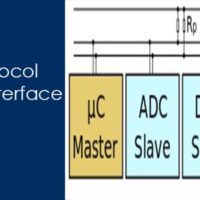The major difference between High-level Data Link Control (HDLC) and Point-to-Point Protocol (PPP) is that High-level Data Link Control is the bit-oriented protocol, while the Point-to-Point Protocol is the byte-oriented protocol.
HDLC protocol supports half-duplex full-duplex transmission, point-to-point, and multi-point configuration and switched or non-switched channels. While PPP is implemented by Point-to-Point configuration only.
Before comparing the HDLC and PPP (HDLC vs PPP), it will good if we see some information about them. It will help to understand the comparison of HDLC and PPP.
What is the HDLC protocol?
HDLC (High-Level Data Link Control) is a bit-oriented code-transparent synchronous data link layer protocol developed by the International Organization for Standardization (ISO). The standard for HDLC is ISO/IEC 13239:2002. HDLC provides both connection-oriented and connectionless service.
In HDLC, data is organized into a unit (called a frame) and sent across a network to a destination that verifies its successful arrival. It supports half-duplex full-duplex transmission, point-to-point, and multi-point configuration and switched or non-switched channels.
Basic Frame Structure of HDLC:
Click here to HDLC in detail, HDLC Protocol
What is PPP (Point-to-Point):
Point-to-Point Protocol (PPP) is a data link layer (layer-2) communications protocol between two routers directly without any host or any other networking in between. It can provide connection authentication, transmission encryption, and compression.
PPP is a byte-oriented protocol. It is used over many types of physical networks including serial cable, phone line, trunk line, cellular telephone, specialized radio links, and fiber optic links such as SONET.
Internet service providers (ISPs) have used PPP for customer dial-up access to the Internet, since IP packets cannot be transmitted over a modem line on their own, without some data link protocol that can identify where the transmitted frame starts and where it ends.
PPP is a layered protocol that has three components:
- An encapsulation component that is used to transmit datagrams over the specified physical layer.
- A Link Control Protocol (LCP) to establish, configure, and test the link as well as negotiate settings, options, and the use of features.
- One or more Network Control Protocols (NCP) used to negotiate optional configuration parameters and facilities for the network layer. There is one NCP for each higher-layer protocol supported by PPP.
Basic frame format for the PPP:
Now let’s see the difference between HDLC and PPP in the below-mentioned table.
| HDLC | PPP |
| HDLC stands for High-level Data Link Layer Protocol | PPP stands for Point-to-Point Protocol |
| HDLC is Bit-oriented protocol | PPP is a Byte oriented protocol |
| HDLC is used in synchronous media | PPP is used in synchronous as well as asynchronous media |
| It does not support authentication i.e it fails to provide authentication between two nodes. | It supports authentication using protocols such as PAP (Password Authentication Protocol) and CHAP (Challenge Handshake Protocol). |
| It does not offer dynamic addressing. | Dynamic addressing is used. |
| HDLC supports point-to-point and multipoint configurations. | PPP supports only point-to-point configurations. |
| It cannot be operated with non-Cisco devices. | Interoperable with non-Cisco devices also. |
Recommended Post
- Difference between HTTP and HTTPS (HTTP vs HTTPS)
- HDLC Protocol.
- SSL programming in C.
- Socket programming in C.
- Parse XML response in C without using the library.
- Create Http Get and Post request in C.
- File handling in C.
- I2C Communication protocol.
- Embedded C Interview Questions.
- Pointers in C.
- CAN Protocol Interview Questions.
- Bit-wise interview Questions in C.







3 comments